By Matthew Jent
To mark the 25th anniversary of Heartbreakers, an action/sci-fi serial originally serialized in Dark Horse Presents, co-creator Anina Bennett brought the conversation about Female Heroes, Then & Now to SDCC.
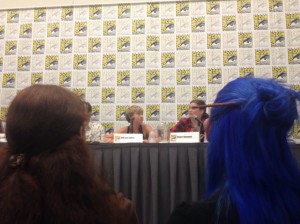
Allison Baker & Claire Hummel share their personal heroes with a full room.
Anina was joined by her husband and Heartbreakers co-creator Paul Guinan, Geek & Sundry’s Kiala Kazebee, comics/movie/video game writer Jimmy Palmiotti, Monkeybrain Co-Publisher and IDW Director of Operations Allison Baker, and former Xbox/current HBO Production Designer Claire Hummel.
The room was packed, and it was filled with men, women, and a fair share of cosplayers. There was a twi’lek wielding a lightsaber, Harley Quinn and Poison Ivy, a TARDIS, and a little Batgirl — also carrying a lightsaber, which was downright adorable.
Anina, who introduced herself as “a recovering comic book editor,” led off by thanking so many people for turning out for a positive discussion about female heroes. Her first question to the panel was about their real-life female heroes, and the panel name-checked a lot of the more popular and interesting female cartoonists in the industry today — Kate Beaton, Colleen Coover, Joelle Jones, Kate Leth, Erika Moen, and others. Claire Hummel specifically pointed out Sheilah Beckett, known for her work on the Little Golden Books, and 20th century artist Mary Blair. “Everyone’s trying to be Mary Blair,” Claire said.
Allison Baker mentioned comics writer & all-star Trina Robbins, Jimmy Palmiotti and Paul Guinan lauded their (respective) mothers and wives, and Kiala Kazebee said she looks up to her Geek & Sundry co-hosts Felicia Day, Veronica Belmont, and Bonnie Burton.
The panel moved on to discussing some of the everyday examples of sexism and fear of feminism in the comics, film, and video game industries, including Ubisoft’s recent declaration that female avatars were too difficult to add to the upcoming Far Cry 4, and David Finch’s assertion that his upcoming run on Wonder Woman will feature a strong, but not feminist, version of the Amazon.
In a time when more and more women are creating and enjoying media in comics, film, and video games, this backward assertion comes from, in the opinion of the panel, that fact that the editors, managers, and leaders of these companies are still men. Without that diversity of thought and opinion from the top, there will continue to be shortsighted missteps like Ubisoft’s.
Anina stressed to the panel attendees: don’t be afraid to call yourself a feminist.
“It means we want equal rights,” said Kiala. “That’s all it is. It’s very simple.”
“I think real men are feminists,” Allison added, and the audience agreed.
There was a brief discussion of the new Thor, but that was deemed not as good news as it might seem, since there are still so few freelancers working on Marvel titles.
“Representation is important, but also on the creators’ side,” Claire said.
Paul asked if Thor as a woman, and Captain America as an African-American, were just gimmicks. But the panel mostly shrugged it off.
“It’s more than DC is doing,” Kiala said.
So why aren’t there more female creators on the big-name books? Jimmy Palmiotti asserted that at DC it was matter of putting the right creators on the right books, but Allison said, “It’s the sign of a rut. The editors don’t go outside of their circles when assembling their creative team. If women see more women working in that field, more women will go into that field.
When asked if leaders had a responsibility to build more diverse teams, the panel’s answer was resoundingly yes. More diverse teams would mean more diverse outlooks, which would mean better books, movies, and games.
Nearing conclusion, Anina asked if the panelists had themselves been accused of sexism or bigotry. Claire talked about creating some Indian-influenced steampunk designs in her early Tumblr days, and being called out for still relying on primarily Western concepts. She said it was because, at the time, she thought, “Steampunk is Western.” Being called out made her realized it didn’t have to be. “I can say I’m sorry, and I can move forward, and I learned how to react reasonably and take advice,” she said.
(Although apparently some doofball approached her after the panel to add a particularly doofy addendum to this commendable and enlightened anecdote. But we’re patient and enlightened feminists around here, so we won’t let that ruin a perfectly good panel.)
A few other examples were given, including a recap of the Harley Quinn/art contest/bathtub snafu from a few months back, but Anina summarized them all with, “All examples involved taking a step back and changing your attitudes and your behavior.”
With a growing number of women in the industry (and fandom), these kinds of conversations are going to happen more often, and not just within the confines of the old school “Women in Comics” panels that used to permeate conventions of this size. Women Heroes was an engaging and (overall) positive discussion about how far this industry has come — and how far it still has to go.
Rave reviews from across the press, prominent features in the mainstream media, and plaudits from huge names within the industry; this new comic is off to a flying start.

Those familiar with my writing here and elsewhere will perhaps know that the topic of “women in comics” is pretty much my thing. Feminism and comics history informs much of what I write, while the specific history of women creators (and women characters) within the medium is my actual field of research. But I’m not the only one that mixes academia and a love of comics, as the creative team behind My So-Called Secret Identity shows.
Will Brooker, Batman scholar and academic author, is on writing duties, alongside professional artists Suze Shore and Sarah Zaidan, who also has a PhD in the comics field. I first heard from Will last year after he read an article I wrote about Barbara Gordon, and he talked about plans he had concerning a new kind of female superhero. Fast forward to 2013, and the first issue of MSCSI has launched to high praise indeed.
My So-Called Secret Identity stars Cat, a twenty-something Irish-American woman living in Gloria City, a place full of celebrity superheroes. Cat is a nobody, just a student, and a cop’s daughter. Except… Cat is also the smartest person in town. There are shades of Batgirl here, of Barbara Gordon, but on all the bits that are often skipped over in favour of crime fighting. With a cast set to expand rapidly, and a marked difference in how the women characters are portrayed, this is one comic to keep an eye on.
I had a chat with Will to get his take on My So Called-Secret Identity, after promising some challenging questions! You can read the entire first issue here: www.mysocalledsecretidentity.com
In a nutshell, how did the project come about, and in what ways does it seek to address the depiction of women in comics?
Brooker: The project came about through a convergence of various factors around the same time, October 2011. I’d been in touch with Jen Vaiano online, and commissioned her to draw some sketches of a superheroine wearing the kind of clothes you could and would plausibly put together if you were really an urban vigilante: cargo pants, black sweater, solid boots. I’d known Sarah Zaidan for a few years as she was initially my PhD student at Kingston University, completing her thesis on masculinity in the superhero genre. I contacted Suze Shore, again, online after seeing a cartoon she posted criticising Poison Ivy’s skimpy outfit in the Arkham Asylum videogame. So I was exploring ideas around representing women differently in the superhero genre, because of my increasing frustration with what I was seeing in mainstream comics, particularly around the launch of the New 52.
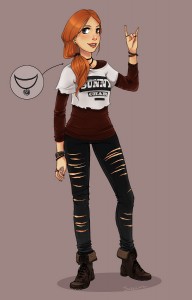 I’d just finished writing a book about Batman, and had turned my attention to Batgirl in a series of articles, both online and in print. I happened to visit a comic shop near my work and was dismayed by the juxtaposition of the glossy cheesecake female stereotypes on the covers, and the group of surly and unwelcoming young men sitting around the store; I then went back to work, where I was leading an induction session for (mostly female) PhD students, and it all came together for me with the realisation that Barbara ‘Batgirl’ Gordon was meant to be a PhD student, but I couldn’t remember her ever being written like one of the women who were actually sitting in the room with me.
I’d just finished writing a book about Batman, and had turned my attention to Batgirl in a series of articles, both online and in print. I happened to visit a comic shop near my work and was dismayed by the juxtaposition of the glossy cheesecake female stereotypes on the covers, and the group of surly and unwelcoming young men sitting around the store; I then went back to work, where I was leading an induction session for (mostly female) PhD students, and it all came together for me with the realisation that Barbara ‘Batgirl’ Gordon was meant to be a PhD student, but I couldn’t remember her ever being written like one of the women who were actually sitting in the room with me.
That was the spark, from my point of view.
MSCSI seeks to address the depiction of women in a few different ways. In production terms, the creative team is almost entirely female, which reverses the normal ratio in mainstream comics. In terms of visual representation, we’ve aimed for a range of different female roles and body types, and dressed them in clothes that you might actually want to buy and wear. In terms of character, the story is told through Cat, who has learned to hide her intelligence but who decides to embrace it as her ‘secret identity’; and the supporting cast also includes a variety of different, but I think interesting, plausible and strong, female characters.
Cat is an intelligent PhD student, but she does conform to Western beauty standards still (pale skin, slim, pretty, etc). In what ways does she differ from other superhero women characters, including Batwoman and Storm (and more historically, Elasti-Girl and Jenny Sparks)?
Brooker: You’re right of course that Cat fits dominant conventions in a number of ways – you could also note that she’s studying philosophy and literature, which are maybe traditional ‘female’ arts subjects, rather than science. The reason for that is simply that I was writing what I know, and writing someone with experiences a little like my own.
One important aspect of MSCSI is that there is no definitive look for Cat, or authoritative representation. Jen’s sketches of Cat are very doe-eyed, skinny and manga-influenced. Suze’s early portraits of Cat are also very cute and polished. I think of those as Cat on a very good day — we all have very good days, I think, and we all have days when we look rough, and during the course of this story we also see Cat when she’s got bigger things to think about than her appearance, and isn’t looking quite so glossy.
My sense of Cat is that she knows she can scrub up fairly well. In the first issue, we see her meeting her new landlady, then dressing up for a tutorial, and then getting changed for a club with people she’s just met. So she is making an effort in every scene.
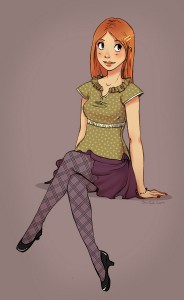 In volumes 2 and 3 of the longer Cat story (we are currently on volume 1, and each volume will have 5 episodes) Cat’s body type changes quite dramatically. So she isn’t always going to have that build. We also see alternate-world versions of Cat who are a different ethnicity, size and gender.
In volumes 2 and 3 of the longer Cat story (we are currently on volume 1, and each volume will have 5 episodes) Cat’s body type changes quite dramatically. So she isn’t always going to have that build. We also see alternate-world versions of Cat who are a different ethnicity, size and gender.
I hope it isn’t simplifying things to say that the way Cat is different from Batwoman, Storm, Jenny Sparks and Elasti-Girl is the way that Flash is different from Wolverine, who is different from Batman, who is different from Lobo. They are very different female characters, and I think we should have different female characters in superhero comics.
Most obviously, Cat does not have any special powers apart from her intelligence. And I don’t mean that in the way that Batman doesn’t have special powers. Batman is a billionaire, an Olympic-level athlete, one of the best martial artists in the world, a scientist, an great detective and the boss of an international paramilitary organisation. Cat is a student. She doesn’t have a costume, she isn’t particularly athletic, she doesn’t have any real financial resources. She is just very, very smart and very good at making connections and seeing how things fit together.
Personally I find Cat a more interesting character Rita ‘Elasti-Girl’ Farr, but I’m not claiming she is an objectively better character, any more than Wolverine is objectively better than Flash as a character. We deserve both, and we should have a range to choose from.
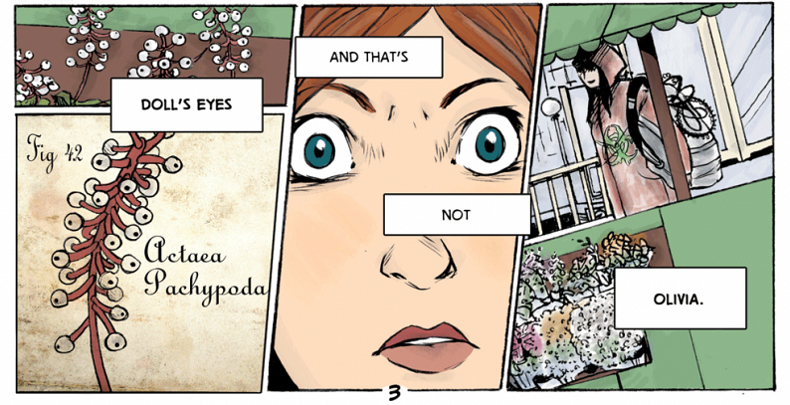
There are a lot of women fans of existing superhero comics out there, and a huge swell of support for projects like this and, say, Greg Rucka’s works. Do you think it is fair to say that it is easier for a male writer to push more diverse women characters within the industry?
Brooker: Based on the support we have received so far, I would tend to say yes, maybe it is. I had no idea how the project was going to be received. I was astounded and delighted when we had our first rave reviews. There have been some sniping comments, but overall the reaction has been amazingly positive.
When I contrast that to the reaction that Anita Sarkeesian got to her Kickstarter campaign about sexist tropes in videogames — and there are many, many examples of similar misogynistic responses to female-run, feminist projects — I think we have had a very easy ride, and I think it’s a fair guess that my perceived gender could be part of that reason.
I do think that there’s a tendency for people to feel grateful and relieved when a man says or does anything remotely feminist — or even when he says or does something which is half-decent and not misogynist — and that’s not how it should be, but I suspect that might be the case with us and it might have helped us out.
I’m not entirely comfortable with that situation, because obviously I am unhappy that female-fronted projects are so often subject to hostility, but I think to an extent we used it as a strategy — putting me forward as the front-person — and if it’s a means to an end and it enables us to achieve positive results, then I can live with it for now.
Having said that, the works of Gail Simone, Kelly Sue DeConnick, Anne Nocenti, Amanda Conner, and Marjorie Liu (to name but a few) have all worked within the superhero framework to give us fabulous women characters – this project is perhaps meant as no reflection on their work? (ie, not here comes a man to save the day!!)
Brooker: I would much rather people saw it as ‘here comes a fan’, or ‘here comes a writer, a person with good intentions’, than ‘here comes a man to save the day’; that’s how it’s meant. That there are already very good creators of female characters within the superhero genre doesn’t mean there isn’t room for other people to try, and to do something different.
I don’t think we see Scott Snyder’s Batman as a criticism, inherently, of Grant Morrison’s Batman, just because it came afterwards and took a different approach. There are fewer fabulous female characters in superhero comics, but it would be a real shame if a new one was taken as a criticism of its predecessors, rather than a tribute.
To pick up on just a couple of your examples, Gail Simone’s work with Oracle on Birds of Prey is one of the very few representations of Barbara Gordon I like and admire, since the character’s inception 45 years ago. And Amanda Conner’s art on Before Watchmen: Silk Spectre was the absolute highlight of that series, for me.
However, I do feel that these very talented and dedicated female creators are sometimes limited by the editorial system they’re working within. Gail Simone was entirely committed to making the New 52 Batgirl as good as it could be, but my understanding is that the miracle-recovery reboot was imposed on her and that she was then fired from the job by email (and re-hired, but still). Amanda Conner’s art is lovely, but it is a small part of the broader Before Watchmen franchise, which overall includes a lot of very stale representations of women and some outright misogyny in the Nite Owl series.
When you write a superhero story in 2013, even if you are trying to subvert or challenge some of the conventions, you are standing on the shoulders of giants — and yes, I think we are indebted to the work of female creators and their achievements.
The team of artists on the book is made up entirely of women, was that a deliberate effort or are they simply the best people for the jobs? (I’m foreseeing “tokenism” comments!)
 Brooker: There are a lot of people on the art team, if you include everyone who contributed character designs and sketches. At least two of them — Carl Hoare and Clay Rodery — are men. Clay’s depiction of Cat is in many ways more ‘realistic’ and less stylised or idealised than Jen Vaiano’s, so to an extent the representation comes down to individual style, rather than gender.
Brooker: There are a lot of people on the art team, if you include everyone who contributed character designs and sketches. At least two of them — Carl Hoare and Clay Rodery — are men. Clay’s depiction of Cat is in many ways more ‘realistic’ and less stylised or idealised than Jen Vaiano’s, so to an extent the representation comes down to individual style, rather than gender.
Clay was on the core art team but had to pull out because of other commitments, so Sarah stepped in on the colours. At the start of this project, some fifteen months ago, I would have said it was more likely that a female artist would understand what I wanted to do in terms of the representation of women within MSCSI, but I don’t know if that’s definitely the case. I still suspect it is probably more likely that a woman would ‘get it’ more quickly.
One of my own issues with the portrayal of women in superhero comics is that criticism often focuses on shaming the women characters that do exist rather than seeking to expand the range of women to encompass all personalities, body shapes, and clothing choices (and sex lives, etc etc). Is this something you’ve been aware of with this project?
Brooker: It wasn’t really a conscious intention on my part, but I think it has worked out that way. Kyla Flyte, for instance, is a blonde, slim, young, white celebrity — I think of her as a cross between Britney Spears and Supergirl. But she is not shamed or criticised within MSCSI, even though she fits the dominant stereotypical mould more than any other female character in the story. In future episodes, we see sides to her personality that contradict expectations and show that she’s as complex and intelligent as anyone else. She wears spangly corsets and has perfect make-up, but that’s because of her profession as a singer, not the extent of her personality.
I think it’s more pertinent and valuable to explore and criticise — and to shame, if necessary — the societal structures that make a woman feel she should dress in certain outfits and be a certain shape and size, rather than to criticise the women who fit that type.
However, again, this wasn’t a deliberate effort; it was more a result of trying to write interesting characters.
The feelings of marginalisation amongst some women readers also intersect with a lack of racial and LGBT representation – is that something the project aims to tackle as well?
Brooker: Not consciously, again; that is, it wasn’t on a tick-list of stuff to include. It emerged organically from what I wanted to do with the characters, and the way they developed in relation to each other.
It would be tokenistic — and not, I think, the right way to approach it — if we’d said we need to include characters from a set of minority groups. My experience of it is that the characters’ ethnicity, cultural background, sexuality and gender orientation just evolved and seemed to make sense. But yes, without making it sound like there’s a tick-list, Connie is African American, Enrique is Latino, and there are characters on the G, B and T spectrums. The one thing that I now realise is missing are any lesbian characters, but as there’s such an established trope of Harley Quinn and Poison Ivy, or Selina Kyle and Batgirl, wrestling and stripping for the sake of teenage boy titillation, perhaps that’s territory I unconsciously wanted to avoid.

What other works served as inspiration or a driving force for this project?
From my point of view as writer, I think there are aspects of Catcher in the Rye, Mrs Dalloway and Ulysses in there, in terms of the wandering in the city and the relationship between Cat and her urban environment. Cat is inspired by Clare Danes in My So-Called Life, combined with a bit of Molly Ringwald in Pretty in Pink.
One of the biggest influences was early Vertigo, under Karen Berger — Sandman, Shade, Enigma, Doom Patrol — and we’ve tried to capture that scrapbook, collage feel throughout the project, from the cover to the lookbook and mind map.
In many ways, the dynamics of the story are an engagement with the Batman mythos — the perennial relationship between Batman and Joker, and the fact that people like Babs Gordon get caught up and injured in the love-hate games between these two antagonists. Urbanite is a little like Batman, a little like Dredd, a little like RoboCop, a little like Vader.
In terms of look and atmosphere, I wanted MSCSI to evoke the tone of Tim Sale’s work on Superman For All Seasons, Spider-Man Blue and Daredevil Yellow — a nostalgic, gentle sense of coffee-shop conversations, sunsets in the city, snatched moments of beauty and tenderness among the action.
There is always (always!) the argument that the depiction of men in superhero comics is similarly beholden to a sexualised power fantasy. How do you address that argument, and does My So-Called Secret Identity feature male characters too?
Brooker: I’m sure you are familiar with the counter-argument to that common argument — that the depiction of men in comics is a male idealised sexual fantasy of men, and that the depiction of women in comics is a male idealised sexual fantasy of women. It is a non-starter as an argument, another attempt at ‘what about the men’ derailing.
MSCSI has male characters, some of whom are sympathetic and likeable, some of whom are less so (although one of the most surprising aspects of the response has been the fact that some male readers see the Urbanite, the city’s self-appointed lawman, as a glorious hero, and at least one has assumed he was female inside the suit!)
From my own point of view as writer, a key theme of MSCSI is that the characters who change, adapt, and manage to be fluid and flexible, come out of it well. The characters who try to cling to the status quo, and are rigid and stuck in their ways, come out of it less well.
So there are a number of sympathetic male characters in the story. I would say what they have in common is their willingness to change and reflect, to accept it when they’re wrong and to consider other points of view.
Cat is a PhD student – are students the target demographic or is this an all ages book?
Brooker: One of the greatest things about the response so far has been the reports from girls aged around 10 and 11 — or their mothers and aunts — who loved the comic and really connect with Cat. I certainly hoped it would be something that younger women and girls could enjoy, and that might inspire them in some way. It’s amazing that it already seems to have had some positive effect.

As a web-based comic, are there plans for a print release in the future? How long-running a title will My So-Called Secret Identity be?
Brooker: We are currently on issue 1 of volume 1; there are five issues in each volume, and three volumes planned. Then we could go back and explore one-shots about supporting characters like Daisy and Dahlia, Kit and Kay — or fill in some of the historical backstory (by that point, too, we will have visited Cat’s ‘future’, which is 2013, so we could return there).
We are aiming for a print release of volume 1 once it’s finished its first run online, but we’re still pretty busy just working on issue 2 right now.
I believe some of the profits are going to charity?
Brooker: Currently, we are donating $100 of the first $1300 to the women’s outreach charity A Way Out http://www.awayout.co.uk/ and raising the total to $1400 to issue two, so we can donate more.
I have a few other charities and feminist organisations in mind that I’d like to donate to if and when we become more successful.
Technically, the project is not for profit: Sarah, Suze and Lindsay, our web designer, are taking a pretty minimal payment for their work, and I’m taking nothing from it financially.
And once again, you can read the entire first issue here: www.mysocalledsecretidentity.com







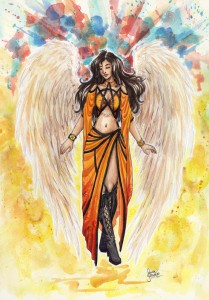

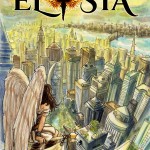
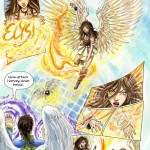
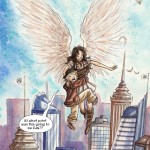
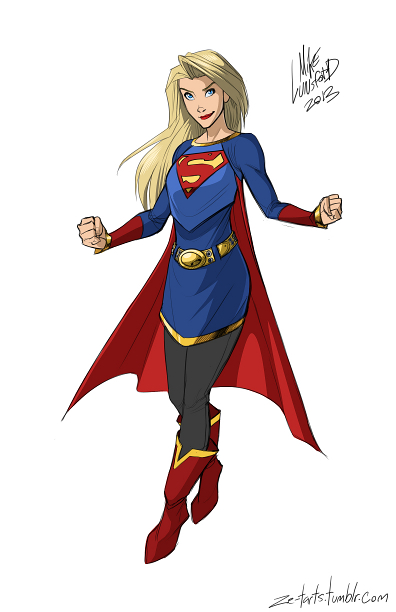
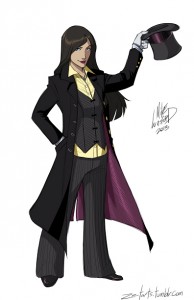
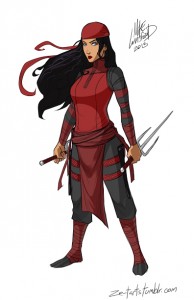



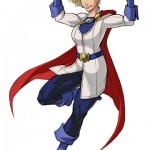
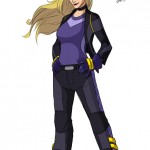








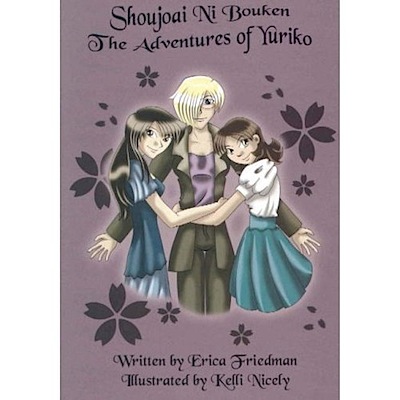 Erica Friedman, president of Yuricon Publishing, recently
Erica Friedman, president of Yuricon Publishing, recently
Thanks for recapping this panel! I was hoping someone would cover this one. Looks like there was some pretty good and thoughtful discussion here. I’m really glad they put emphasis on diversity of creators, which it seems like a some fan discussion is really lacking.
It definitely makes sense that it would be caused by editors being too afraid to choose someone out of their usual circle, since it seems to me that that a lot of the new creative talent in comics and illustration is mostly not male. I feel like the make-up of the “old guard” doesn’t match today’s creative community.